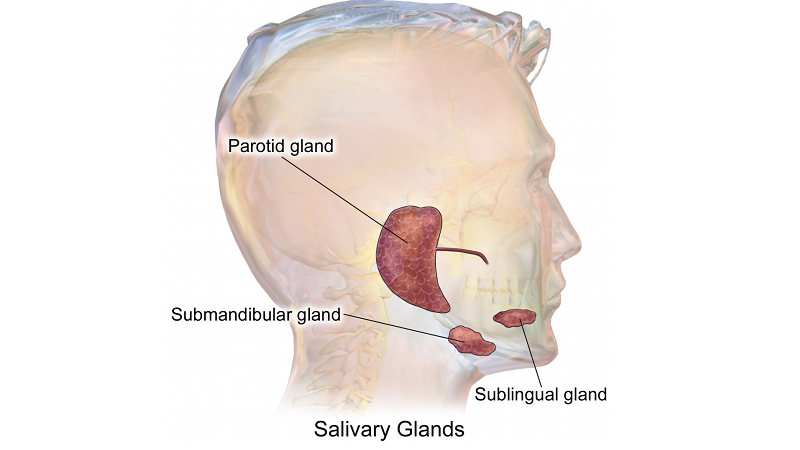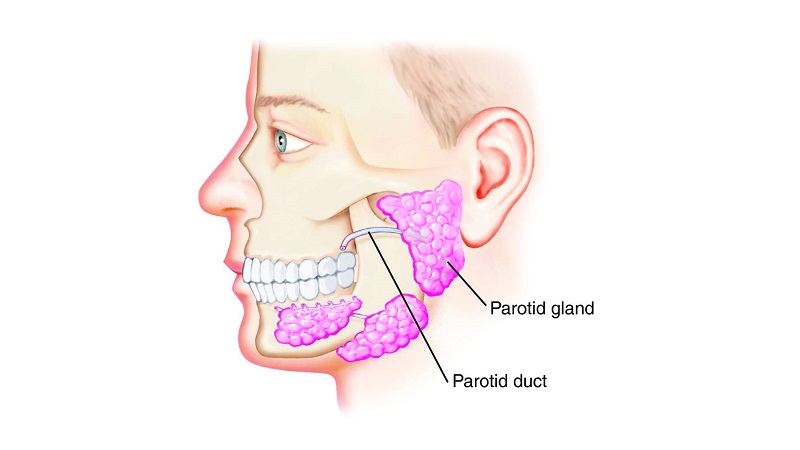What are the symptoms of salivary gland disorder?
Your salivary glands produce saliva that keeps your mouth moist. It helps protect teeth from rapid decay and helps you digest food. Salivary glands are relatively small and are located around the inner lining of the mouth, lips and cheeks. A number of diseases can affect your salivary glands. These cases range from cancerous tumors to Sjögren's syndrome. While some diseases go away with time or antibiotics, others require more serious treatment, including surgery.. In this article, the website of Dr. Hossein Borjian The best dentist in Isfahan which has been compiled for you dear ones. We will examine the symptoms of salivary gland disorders.
Diagnosis of salivary gland disorders
The doctor recommends the test based on the medical history and physical examination. Some cases are obvious only through history and physical examination. In such cases, diagnostic tests may not be necessary. Your doctor may want to see the blockage to diagnose a blocked salivary gland. Taking x-rays of the affected area can help accurately diagnose the blockage. The head and neck surgeon can then use anesthesia to numb the opening of the salivary glands and remove any blockage.
If your doctor needs precise targeting of the salivary glands, an MRI or CT Scan It can provide deeper images. Also, a biopsy to remove salivary gland tissue can help with the diagnosis, especially if your doctor suspects you may have an autoimmune disorder that affects your salivary glands..
Suggested content : What are the causes of throbbing tooth pain?
Symptoms of salivary gland disorder
In general, the symptoms of salivary glands depend on the location. Accordingly, the doctor may consider the following to check the symptoms:
- Do they feel dry mouth?
- Are symptoms affecting your eating habits?
- Are systemic symptoms suggestive of infection, autoimmune disease, sarcoidosis, or malignancy?
- How long have you experienced the symptoms? Has your weight increased since you first noticed it?
- Which of the salivary glands is involved? It is usually parotid. The condition affects different salivary glands differently.
- If there is swelling, is it unilateral or bilateral? Are your symptoms constant or intermittent? Is the swelling painful? The pain may be related to the ear or throat.

Symptoms of sialolithiasis include::
- Painful lump under the tongue
- Pain that increases when eating.
Symptoms of sialadenitis include::
- Then
- Strong or smelly pus
- A lump in your cheek or under your chin
- Pus that flows into your mouth.
Cysts that grow in your salivary glands can cause::
- Difficulty swallowing
- eating disorder
- Difficulty speaking
- Yellow mucus that is discharged when the cyst bursts.
Viral infections of the salivary glands, such as mumps, can cause::
- Then
- Headache
- joint's pain
- Muscle pains
- Swelling on both sides of the face
Symptoms of Sjogren's syndrome include::
- dry mouth
- Ulcers in the mouth
- Dry cough
- dry eyes
- Tooth Decay
- Swollen salivary glands
- Joint pain or swelling
- Inexplicable fatigue
- Frequent salivary gland infections
- If you have diabetes or alcoholism, you may also have swollen salivary glands.
See a doctor if you notice the following symptoms:
- Bad taste in the mouth
- dry mouth
- mouth pain
- facial swelling
- Difficulty opening the mouth
Dr. Hossein Borjian's Instagram page The best dentist in Isfahan
Symptoms of salivary gland disorders based on gland type
As mentioned, your symptoms may vary depending on the type of gland involved, e.g:
Inflammation of the parotid gland
Inflammation of the parotid gland is known as ankylosing spondylitis. The lateral lobe is also likely to cause a mass in front of the ear. Inflammation can affect the tonsils on the same side of the face. In the case of inflammation of the parotid glands, the general inflammation of the gland can be due to blockage of the duct or inflammatory disease or local masses related to the tumor..
Submandibular glands
Pathology of the submandibular gland usually involves inflammation below and in front of the angle of the jaw. The doctor may check the duct opening for inflammation and pus, or indeed a visible stone, and ask you to lift your tongue to the roof of your mouth.. With the index finger of one hand inside the mouth and the fingers of the other hand, examine the outer surface of the mass in the neck. Under normal conditions, the gland is not palpable, but when enlarged, it can be felt 2-3 cm anterior to the sternomastoid, below the horizontal ramus of the mandible.. The tube has a rubber consistency and should not be fixed to the floor of the mouth or tongue.
Sublingual gland pathology is likely to cause inflammation in the floor of the mouth.
Ways of communication with the specialized dental center of Najm
Attention :
- The scientific accuracy of the above published material should be confirmed by the patient's personal consultation with Dr. Borjian.
- This article is managed and published by the site admin.



